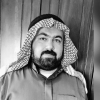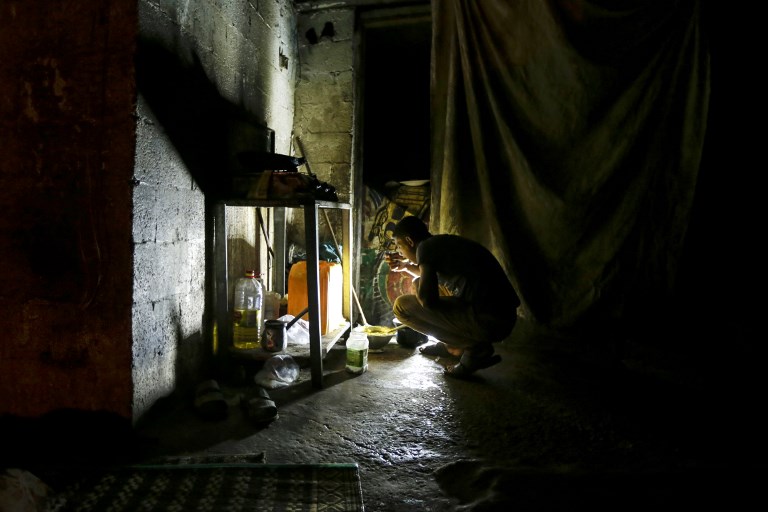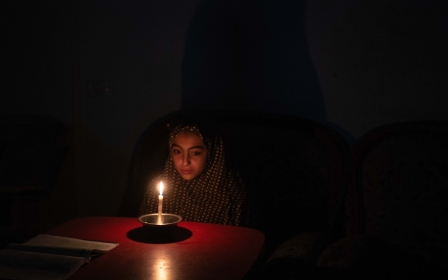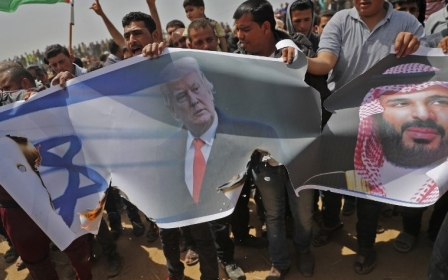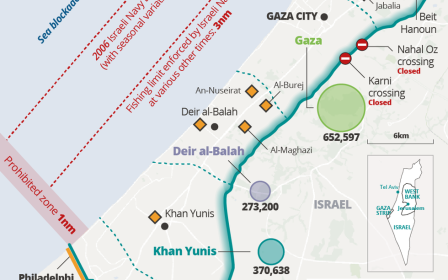What's behind Gaza's anti-Hamas protests?
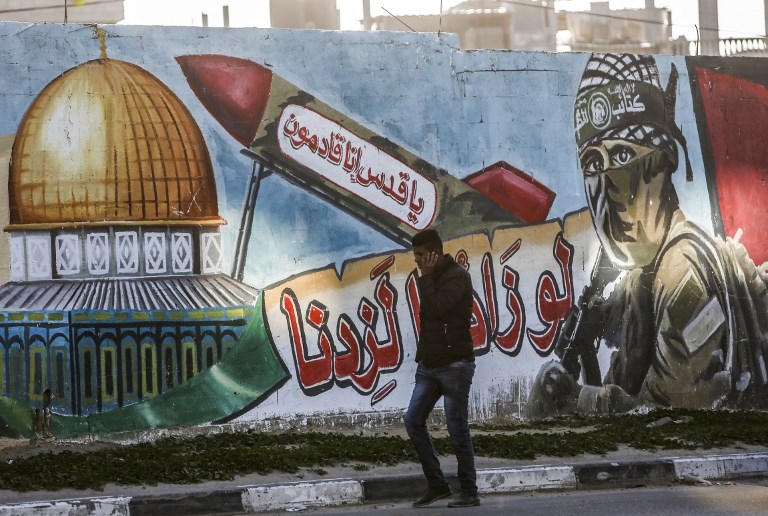
After more than a decade of Israel’s strict blockade on Gaza - a siege that the United Nations has said will make the coastal enclave uninhabitable by 2020 - no one can deny any longer the rights of the two million residents to protest their confinement in the world’s largest open-air prison.
It is therefore not surprising to see Palestinians in Gaza turning up in the streets to demonstrate against their daily hardships, chanting: “We want to live.”
‘Hamas has to leave’
Many of these protesters have no bread to feed their children, no clothes to wear, and no electricity or fuel to warm their homes. But when you start to see these same protesters attacking police officers and properties, and their slogan changes to “Hamas has to leave”, you realise that the story has another, hidden side.
When protests broke out on 14 March, there was a heavy security presence because intelligence indicated that the demonstrators planned to begin with a chant against poverty, before turning violent and calling for the ousting of Hamas, interior ministry spokesperson Iyad al-Bozom told Middle East Eye.
Demonstrators filmed this suppression and posted it on social media, in an effort to persuade more people to turn up against Hamas
The next day, the gatherings were larger and more chaotic, as protesters chanted against Hamas and the resistance in general. As a journalist, I attended the protests and saw this directly.
Police officers shot live bullets into the air - they did not have rubber bullets, due to the siege - to disperse the masses. But some demonstrators filmed this suppression and posted it on social media, in an effort to persuade more people to turn up against Hamas.
Urging Palestinians to rise up
To pile on the pressure, a Fatah spokesman from the occupied West Bank posted a picture of a seriously wounded Iraqi youth, suggesting he was from Gaza and that Palestinians should get revenge. Other Fatah officials also publicly incited people to join the protests through televised appeals.
It became clear that Fatah and the Palestinian Authority (PA), and likely Israel as well, were behind these protests.
Ofir Gendelman, Israeli Prime Minister Benjamin Netanyahu’s Arabic spokesman, also encouraged Palestinians in Gaza to rise up, noting that they “deserve a better life, without Hamas”.
“It was planned to be fierce protests,” said Iyad al-Shorbaji, head of the Palestine Institute for Strategic Studies, adding: “Using force was the only way to undermine the plan meant to drag the besieged enclave into a civil war, [but] there was no need for excessive force, mass arrests and other forms of violence that led to tens of casualties.”
Reporting the truth
The interior ministry, however, has alleged that some Palestinians in Gaza received orders from the PA and Fatah to ignite the protests and document the expected police crackdown on social media.
The ministry said it would publish soundbites of the PA’s intelligence chief ordering Fatah members and PA employees to fuel the riots once the investigation into the riots is over.
Journalists and researchers were among those swept up in arrests by Hamas authorities.
“We cannot question people in the middle of dispersing fierce riots,” Bozom said.
“But anyone who proved he was a journalist was immediately released.”
My son, a cameraman who was arrested and remained in custody for an hour, confirmed this.
With Gaza under an international microscope, its government must acknowledge that peaceful protests - held for whatever reason - are a protected right guaranteed to everyone.
The interior ministry in Gaza, as well as Hamas, should fulfil their promise and bring everyone involved in any wrongdoing to justice.
At the same time, journalists, rights groups, researchers and activists must commit to the principles of their professions, and report only the truth - and stop getting involved in proxy wars.
The views expressed in this article belong to the author and do not necessarily reflect the editorial policy of Middle East Eye.
Middle East Eye propose une couverture et une analyse indépendantes et incomparables du Moyen-Orient, de l’Afrique du Nord et d’autres régions du monde. Pour en savoir plus sur la reprise de ce contenu et les frais qui s’appliquent, veuillez remplir ce formulaire [en anglais]. Pour en savoir plus sur MEE, cliquez ici [en anglais].


